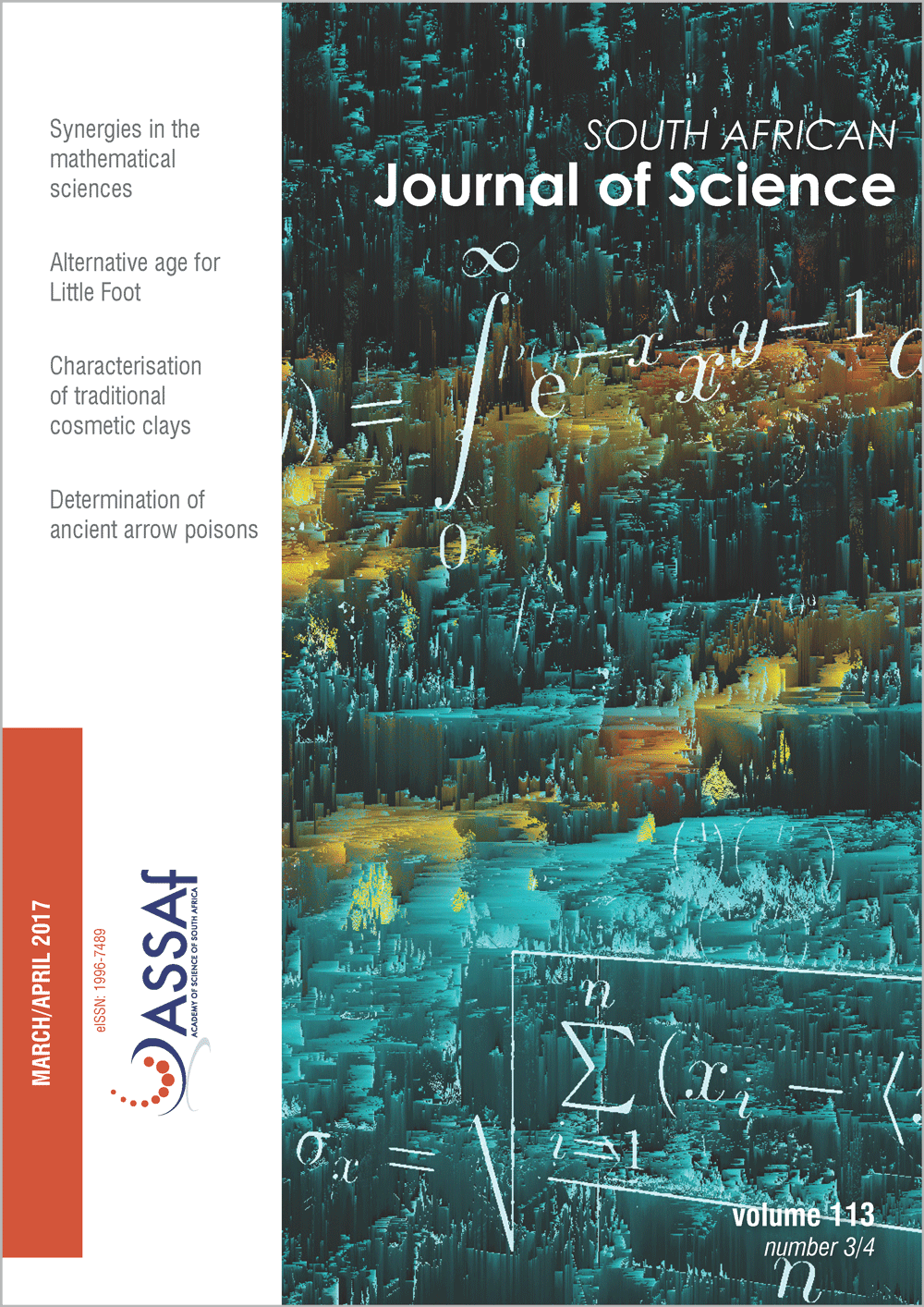Characterisation of vumba and ubumba clays used for cosmetic purposes
DOI:
https://doi.org/10.17159/sajs.2017/20160105Keywords:
quartz, tradition, chemical composition, mineral compositionAbstract
Two traditional cosmetic clays bear similar names in different local South African languages: vumba (Tshivenda) and ubumba (isiZulu). The wet clays are applied topically for cosmetic purposes by the respective indigenous peoples. Six samples from two South African provinces were characterised using X-ray diffraction, X-ray fluorescence spectroscopy, Fourier transform infrared spectroscopy, thermal gravimetric analysis and scanning electron microscopy. It was found that the samples differed widely with respect to mineralogy and chemical composition. This finding raises the possibility that texture characteristics during application on the skin override composition effects. Of concern is the high levels of quartz found in all the samples as it might pose a health hazard; the lowest value for quartz was 11 wt% for vumba, while values for ubumba ranged from 26 wt% to 85 wt%. All samples contained varying amounts of silicates in the form of smectite, kaolin, chlorite and plagioclase. Minor amounts of anatase and rutile were present in some samples. Three samples also contained goethite. All samples were essentially free from the toxic elements As, Pb, Hg, Cd, Se and Sb. However, they did contain low levels of chromium and heavy metals such as Cu, Zn and Ni. The pH values of ubumba slurries were slightly basic, while those of a vumba slurry were slightly acidic.
Significance:- Wide ranges of composition appear to be acceptable.
- The clays do not contain highly toxic or radioactive elements.
- The high levels of quartz present may pose a human health risk.
Published
Issue
Section
License

All articles are published under a Creative Commons Attribution 4.0 International Licence
Copyright is retained by the authors. Readers are welcome to reproduce, share and adapt the content without permission provided the source is attributed.
Disclaimer: The publisher and editors accept no responsibility for statements made by the authors
How to Cite
- Abstract 579
- PDF 583
- EPUB 207
- XML 251












.png)